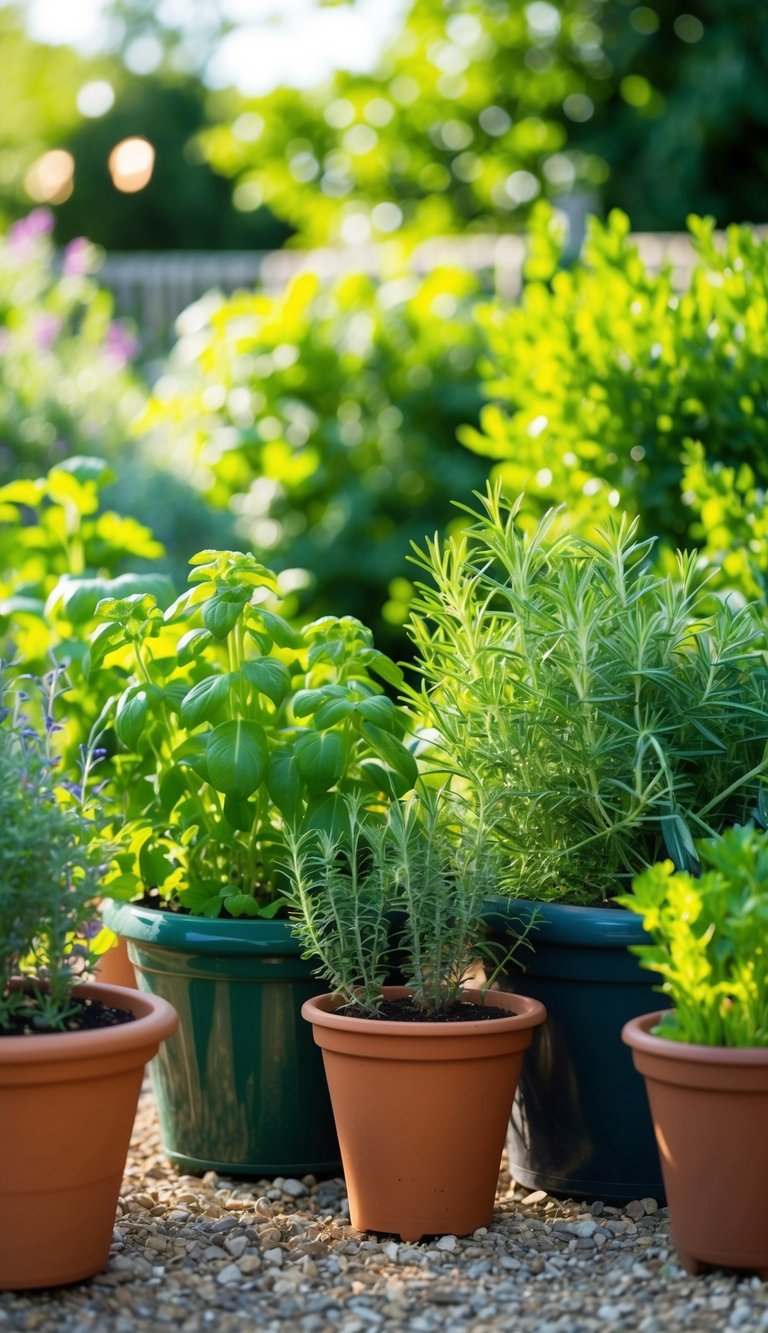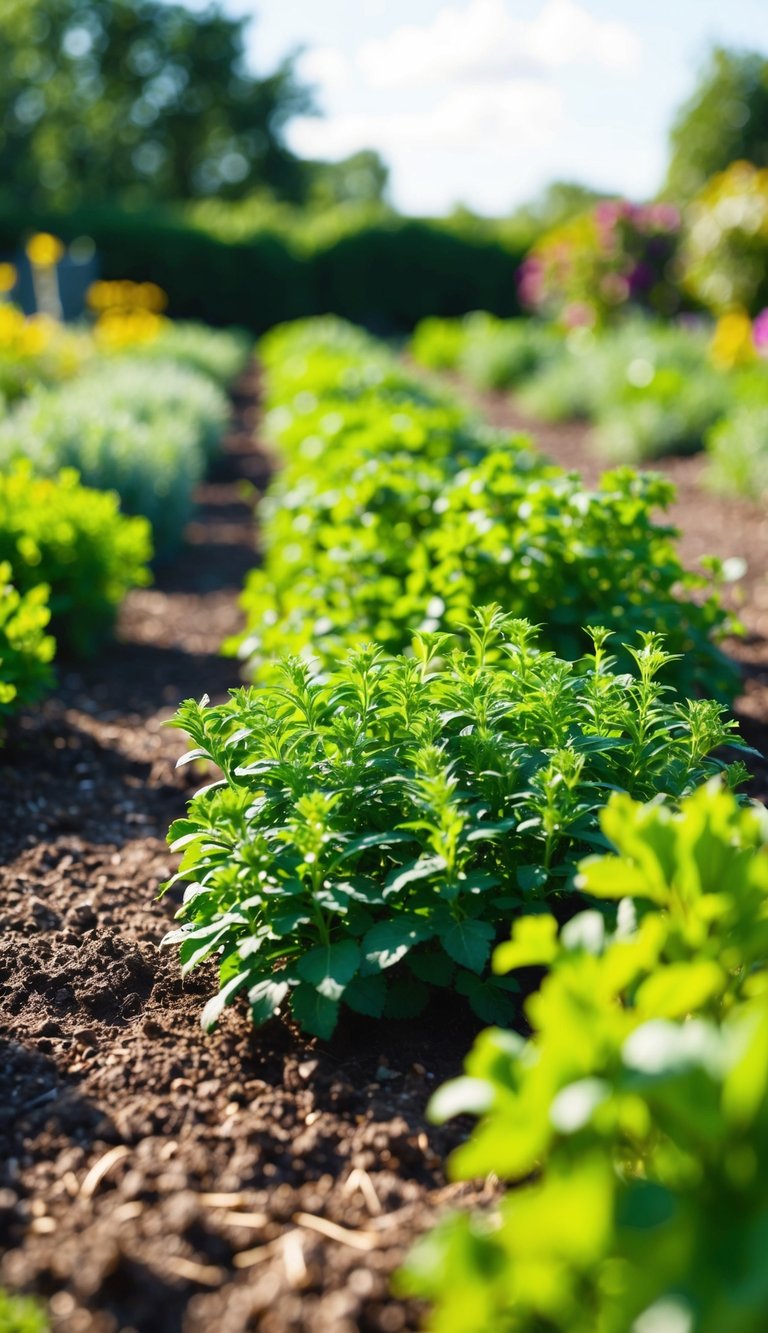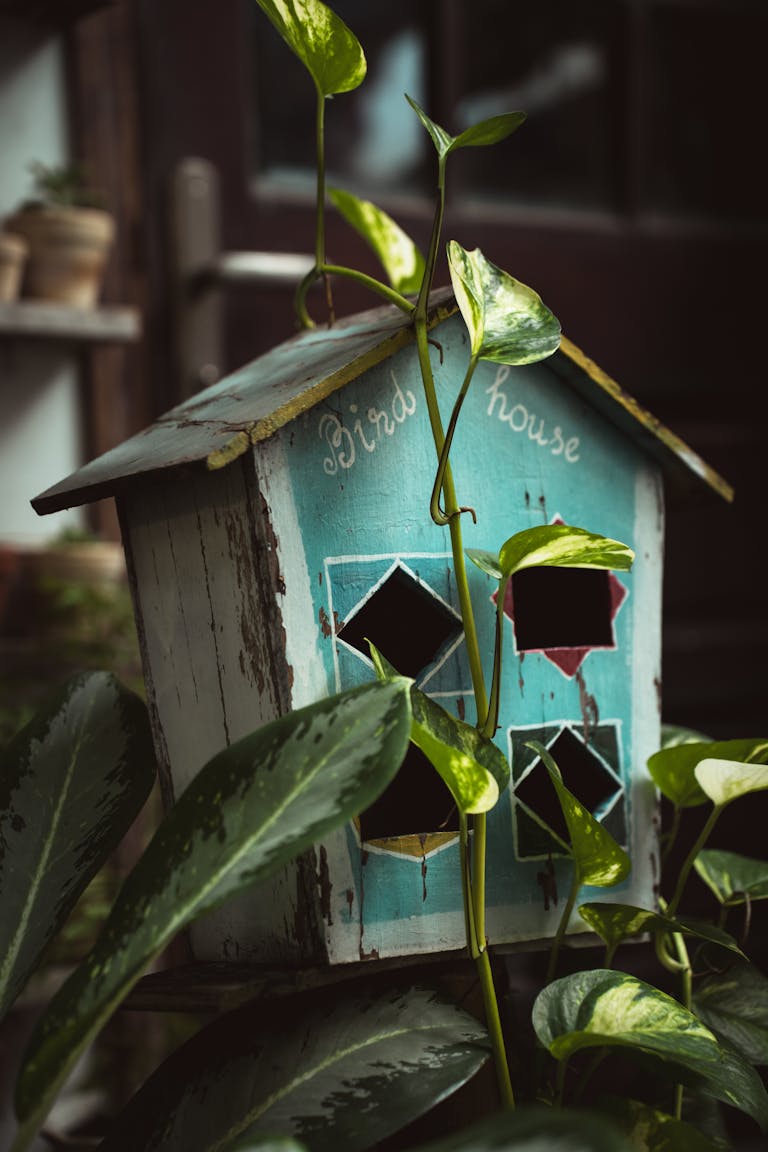How to Make Money Selling Fresh Herbs by Growing Them at Home in Your Small Garden
If you’re looking to make some extra cash, growing fresh herbs at home might be just the ticket.
This post may contain affiliate links, which means I’ll receive a commission if you purchase through my link, at no extra cost to you. Please read full disclosure here.
You can turn a small garden into a profitable venture by nurturing delicious herbs and selling them locally.
Not only will you enjoy the satisfaction of growing your own plants, but you can also share them with friends, neighbors, and local restaurants.

Getting started is easier than you think. You don’t need a lot of space or complex equipment.
With a few basic steps, you can grow popular herbs like basil, parsley, and mint right in your backyard or even on a balcony.
In the next sections, you’ll learn how to grow herbs effectively, the best ways to sell them, and tips for maximizing your profits.
Growing and selling fresh herbs can be a fun hobby while also adding extra income to your pocket.
Getting Started with Herb Gardening
Starting your herb garden is exciting and rewarding.
You’ll want to focus on finding the best spot to plant your herbs and choosing the right varieties that are popular in the market.
Choosing the Right Location
Choosing the right spot for your herb garden is key.
Look for a place that gets at least 6-8 hours of sunlight each day. Herbs thrive in sunny spots, so they can grow strong and healthy.
Consider areas that are protected from strong winds. This will help your plants stay upright and avoid damage.
Good drainage is also important. You can test the soil by digging a small hole and filling it with water. If it drains fast, that’s great!
If you have limited space, don’t worry. You can also grow herbs in pots on your balcony or porch.
Just make sure the containers have drainage holes.

Selecting Herbs That Sell
When selecting herbs, think about what sells well in your area.
Some popular choices include:
- Basil: Great for cooking and making pesto.
- Cilantro: Used in many cuisines.
- Mint: Excellent for drinks and desserts.
Also, consider growing parsley and oregano. These are often in demand.
Research local markets to find out what herbs people want. Don’t forget to check if any herbs are easy to grow in your climate.
Start with a few varieties and expand later. Growing herbs that sell well can lead to more profit for your efforts!
Cultivation Techniques

Growing fresh herbs at home is a rewarding way to make money. Knowing how to properly cultivate them will help ensure a healthy harvest.
Preparing the Soil
Start with good soil because it is essential for herb growth.
You should use well-draining soil that is rich in organic matter. Mixing in compost can help improve soil quality.
Before planting, clear any weeds or debris from your garden bed.
Loosen the soil to about 12 inches deep for better root growth.
Test the pH level of your soil, aiming for a range between 6.0 and 7.0 for most herbs. Adding lime can help raise the pH, while sulfur can lower it.
Sowing and Planting
When it comes to sowing, choose the right time for each herb. Most herbs do best when sown in spring or early summer.
You can either plant seeds directly in the soil or start them indoors.
If you choose to start them indoors, use seed trays with seed starting mix. Be sure to follow the depth instructions on the seed packet.
Once seedlings are strong enough, transplant them into your garden.
Space them according to the variety; some need more room to grow.
For example, basil should be about 12 inches apart, while parsley can be closer together at around 6 inches.
Watering and Feeding
Herbs need consistent moisture but avoid overwatering.
Water your garden when the top inch of soil feels dry. On hot days, your plants might need daily watering.
Feeding herbs is important too.
Use an all-purpose organic fertilizer every 4-6 weeks during the growing season. This helps provide essential nutrients.
Pay close attention to signs of nutrient deficiency, like yellowing leaves, and adjust accordingly.

Pest and Disease Control
Pests can be a nuisance for herb growers.
Regularly inspect your plants for any pests, like aphids or spider mites. Homemade sprays using soap and water can help manage these pests without harsh chemicals.
Diseases can also affect your herbs.
To prevent sickness, rotate your crops and avoid planting herbs in the same spot every year.
You should also ensure good air circulation around your plants. This helps reduce the chance of fungal infections.
Harvesting and Packaging

Knowing how to properly harvest and package your fresh herbs is key to maintaining their quality. This section will cover when and how to harvest, ways to keep herbs fresh, and eco-friendly packaging options.
When and How to Harvest
Timing is important when you harvest herbs. The best time to pick them is in the early morning. This is when their flavor is at its peak.
To harvest, use clean, sharp scissors or garden shears. Cut just above a leaf node. This encourages new growth. For perennials, leave some stems so they can keep growing.
Make sure to handle the herbs gently. They can bruise easily.
If you’re harvesting a lot, do it in small batches. This helps keep them fresh as you work.

Preserving Freshness
Keeping your herbs fresh is essential for good sales.
Start by rinsing them gently under cold water to remove dirt. Pat them dry with a clean cloth or paper towel.
Next, store them properly.
For short-term, place herbs in a glass of water like a bouquet. Cover with a plastic bag and put them in the fridge. This can keep them fresh for about a week.
For longer storage, consider drying or freezing them.
To dry herbs, hang them upside down in a cool, dark place. Once dried, store them in airtight containers.
Freezing works as well, just chop and place them in ice cube trays with water.

Eco-Friendly Packaging Options
Using eco-friendly packaging can attract more customers.
Consider using biodegradable materials like paper bags or compostable containers. They show that you care about the environment.
If you’re selling at markets, use glass jars. They are reusable and add a nice touch.
You can also use cloth bags that customers can bring back for refills.
Clear labeling is important. Use paper stickers with your brand name. This helps customers remember you.
An eco-friendly approach can boost your sales while being kind to the planet.
Selling and Marketing
To sell fresh herbs from your garden, focus on pricing, marketing strategies, and building strong customer relationships. These steps will help you attract customers and keep your herb business thriving.
Setting Prices
Setting the right price is key to success.
Start by checking local prices for fresh herbs. You can often find this at farmers’ markets, grocery stores, or online.
Consider the cost of seeds, soil, pots, and water.
Calculate how much time you spend growing and caring for the herbs. Once you know your costs, add a profit margin.
Here’s a simple pricing guide:
- Basil: $2.00 – $3.00 per bunch
- Cilantro: $1.50 – $2.50 per bunch
- Parsley: $1.50 – $2.50 per bunch
Adjust your prices based on freshness and demand. Don’t be afraid to offer discounts for larger orders.
Marketing Strategies
Using effective marketing strategies can attract more customers.
Start local by joining community groups or farmers’ markets. Social media is also a great tool.
Share photos of your herbs, and let people know about your gardening process.
Create an Instagram, Facebook page or Bluesky account to showcase your herbs. Engage with your followers regularly.
Consider running promotions, such as “buy one, get one free” or discounts for first-time customers.
You can also make use of flyers or business cards. Place them in local cafes or grocery stores.
People who love cooking will appreciate having fresh herbs close by.
Building Customer Relationships
Building relationships with your customers helps keep your business strong. Start by providing excellent service.
Be friendly and helpful, and listen to any feedback they give you.
Offer loyalty programs. For example, provide a discount after a certain number of purchases. This encourages customers to return.
You can also ask for their preferences. Knowing what they like can help you grow more of their favorite herbs.
Consider hosting small workshops about cooking with herbs. This will create a community and deepen connections.
Happy customers are more likely to recommend your business to friends.







